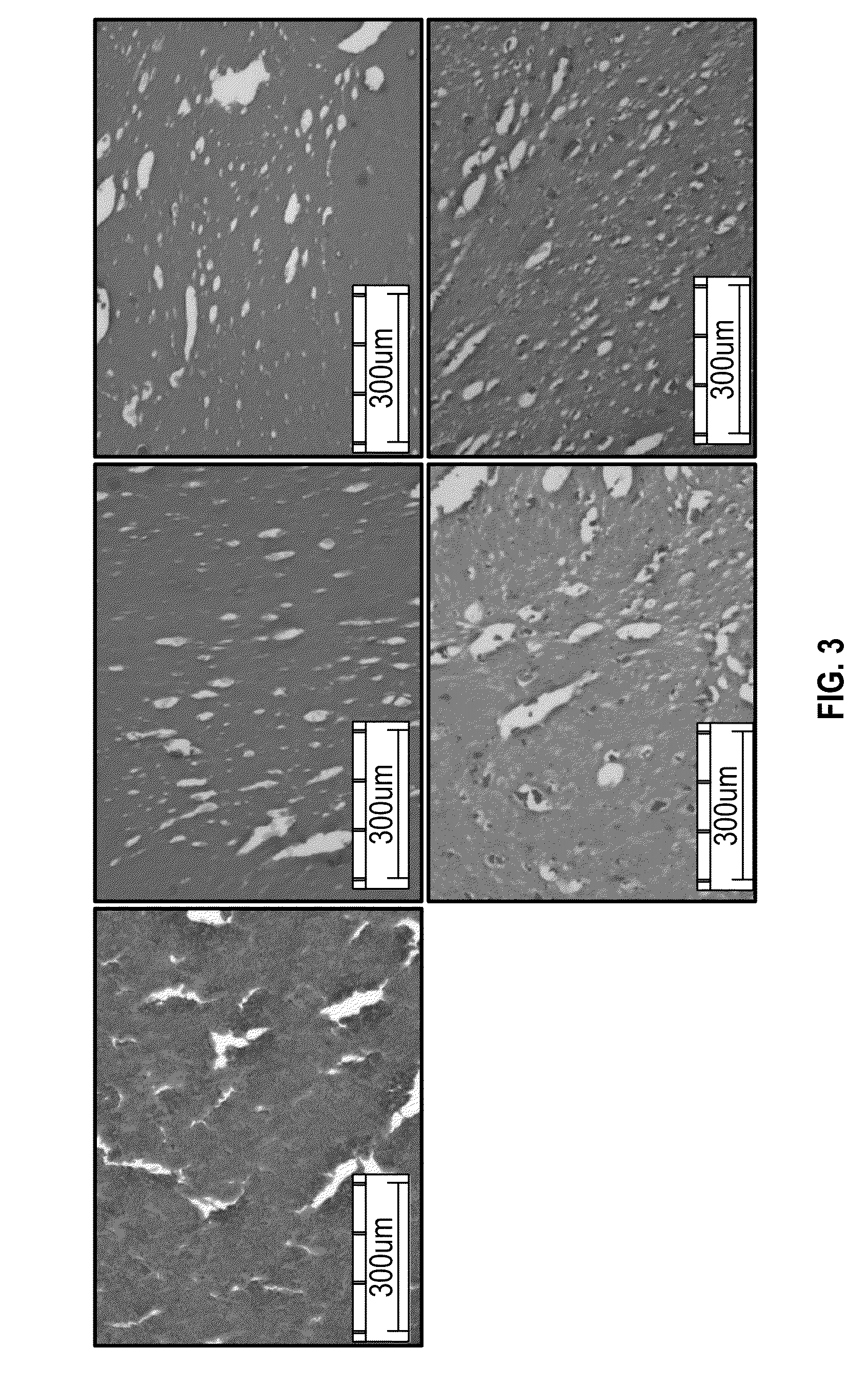Plant based meat structured protein products
a protein product and plant-based technology, applied in the field of food products, can solve the problems of limited success, low consumer satisfaction and acceptance rate of new protein food products, and new vegetarian/vegan protein food products that do not have the widely enjoyed textural and sensory characteristics, and achieve high heat hydration integrity and integrity
- Summary
- Abstract
- Description
- Claims
- Application Information
AI Technical Summary
Benefits of technology
Problems solved by technology
Method used
Image
Examples
example 1
Production of Meat Structured Protein Products by Thermoplastic Extrusion, and Characterization by pH Measurement and Warner-Bratzler Shear (WBS) Analysis
[0135]For each product, a mix of the dry ingredients listed in Table 1 was blended for 5 minutes in a ribbon blender. The dry mix was transferred to the hopper of a gravimetric feeder that metered the blend through the feed port of a twin screw extruder (MPF 50 / 25 Co-rotating Twin-Screw Extruder (APV Baker, Grand Rapids, Mich.)) at a flow rate of 31 kg / hr. At the same time, a liquid mix (97% water, 3% sorbitol) was pumped through a liquid feed port located 330 mm downstream of the dry mix feed port at a flow rate of 21.65 kg / h (22.5 kg / h for the 0% and 1.25% and 1% K-bicarbonate products). The twin screw extruder mixed the dry and liquid mixes to generate dough compositions.
TABLE 1Dry Mix Composition (% by weight)PeaK-Ca-ProteinGyp-BeefBicar-Hydrox-ProductIsolatesumFlavorbonateide0% K-Bicarbonate93.5 *42.5000.5% Ca-Hydroxide93 * 4...
example 2
Production of Meat Structured Protein Products by Thermoplastic Extrusion, and Characterization by Protein Structure, Moisture Content, Texture Profile, Water Holding Capacity, Water Activity, Percent Dissolved Solids, High Heat Hydration Integrity, and Sensory Analyses
[0141]Dry mixes of composition 95.4% by weight pea protein isolate (for details see footer of Table 1), 2% by weight of gypsum (for details see footer of Table 1), and 2.6% by weight of beef flavor (for details see footer of Table 1) were blended for 5 minutes in a ribbon blender. The dry ingredient blend was transferred to the hopper of a gravimetric feeder that metered the blend through the feed port of a twin screw extruder (MPF 50 / 25 Co-rotating Twin-Screw Extruder (APV Baker, Grand Rapids, Mich.) at a rate of 27.1 kg / h. At the same time, liquid mixes (water with potassium bicarbonate; see Table 4) were channeled from a water tank through an in-line water heater that kept the water temperature fixed at 21.1° C., a...
example 3
Production of Meat Structured Protein Products by Thermoplastic Extrusion, and Characterization by Urea Analysis
[0155]Protein fibrous products and hydrated protein fibrous products were produced essentially as described in Example 1 using a dry mix that comprised either 0% by weight of potassium bicarbonate (see Table 1 for composition of dry mix) or 4% by weight of potassium bicarbonate (composition of dry mix: 93.5% pea protein isolate F85M, 2.5% beef flavor, and 4% potassium bicarbonate).
Urea Analysis
[0156]Five 25 g samples of each protein fibrous product and each hydrated protein fibrous product were washed with 100 mL of PBS before they were soaked for 1 hour at room temperature in 100 mL of either PBS or 10 mM dithiothreitol (DTT) or 8M urea on a rocker table. The samples were recovered from the PBS, dTT, and urea by decanting off the solvent and placing the solids onto a paper towel. Average sample diameters were measured using calipers.
[0157]The samples were then placed on a...
PUM
| Property | Measurement | Unit |
|---|---|---|
| angle | aaaaa | aaaaa |
| length | aaaaa | aaaaa |
| thickness | aaaaa | aaaaa |
Abstract
Description
Claims
Application Information
 Login to View More
Login to View More - R&D
- Intellectual Property
- Life Sciences
- Materials
- Tech Scout
- Unparalleled Data Quality
- Higher Quality Content
- 60% Fewer Hallucinations
Browse by: Latest US Patents, China's latest patents, Technical Efficacy Thesaurus, Application Domain, Technology Topic, Popular Technical Reports.
© 2025 PatSnap. All rights reserved.Legal|Privacy policy|Modern Slavery Act Transparency Statement|Sitemap|About US| Contact US: help@patsnap.com



